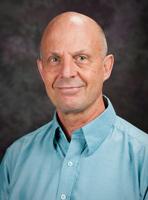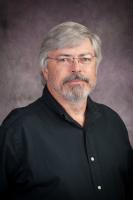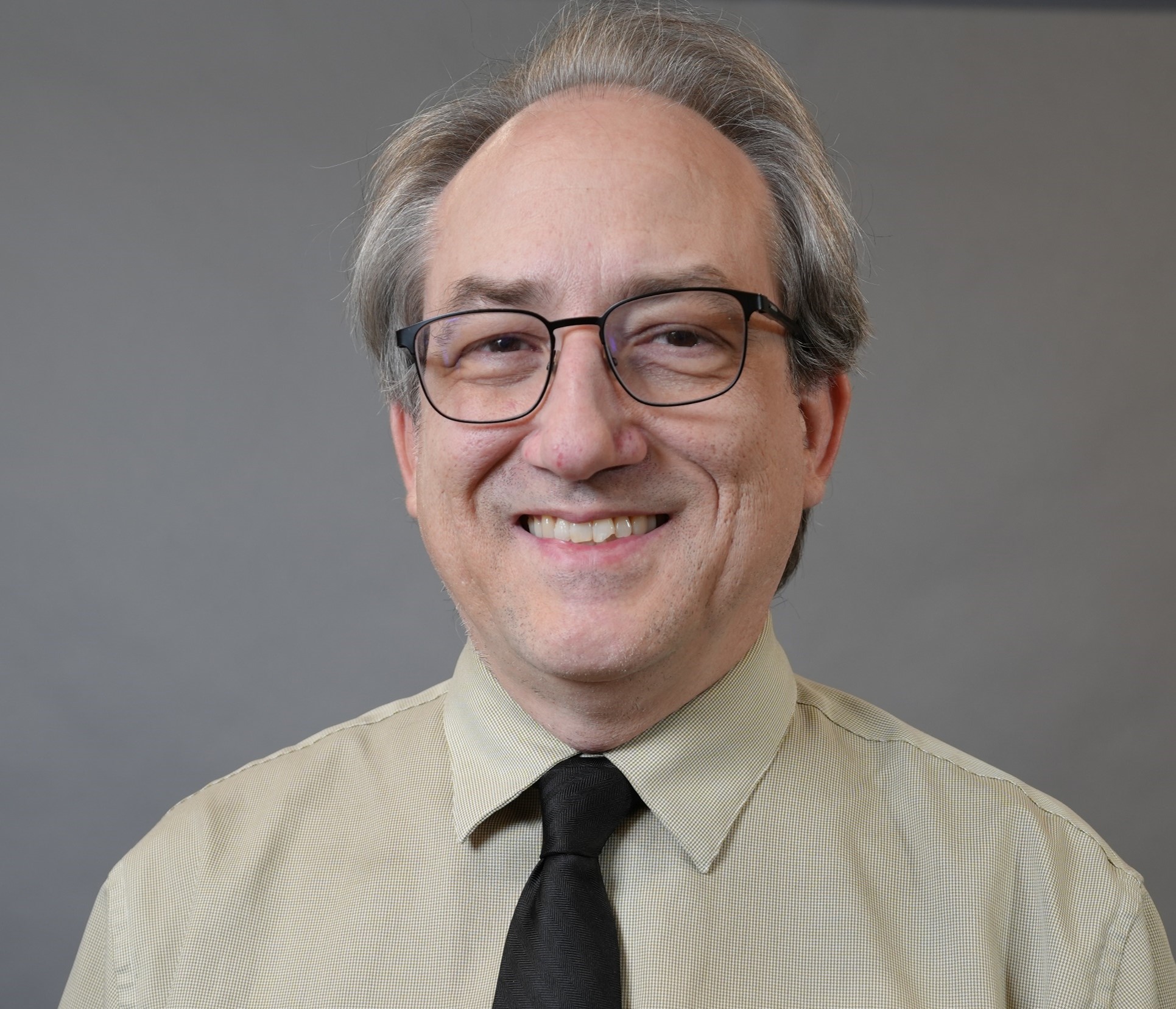NSF REU at K-State: Laser-matter Interactions at the Atomic and Nanoscales
The K-State REU program offers summer fellowships to do world-class research in our friendly physics department in the scenic Flinthills. We are funded by the National Science Foundation.
Atomic, Molecular & Optical Physics (AMO)
 Dr. Itzik Ben-Itzhak: Dissociation of molecular-ion beams, such as CS2+ or CO2+, by ultrafast intense laser pulses
Dr. Itzik Ben-Itzhak: Dissociation of molecular-ion beams, such as CS2+ or CO2+, by ultrafast intense laser pulses
Email: ibi@phys.ksu.edu
During the 2014 REU program our research group will be involved in projects where undergraduate students can do interesting work and contribute to our research progress. Below I have briefly outlined a project which would best fit an REU student. We expect the project to provide hands-on experience in the laboratory, conducting advanced laser-matter interaction measurements, analyzing the data, and finally preparing the interpreted results for publication. In addition, undergraduate students can get involved in other summer projects within our group [1]. Our research group includes my graduate students Mohammad Zohrabi, Utuq Ablikim, Ben Berry, Bethany Jochim [2], and Travis Severt [2]. The REU student is expected to work closely with Travis, the other graduate students, and under the guidance of Dr. Kevin Carnes and myself.
For about a decade, we have been studying the interaction of intense ultrafast laser pulses with fast molecular ions through the application of a coincidence three-dimensional momentum imaging technique [3]. One important aspect of our experimental method is the ability to investigate unique molecular targets, such as the long-lived, vibrationally cold, CO2+ molecular ion, in the rapidly changing strong field of a laser [4]. We have recently extended the studies of metastable molecular ions [4] to another interesting long-lived molecular ion, namely CS2+, and found some intriguing phenomena. The preliminary results suggest, for example, that the molecule can dissociate without gaining any energy from the laser field, therefore raising the question of how the laser field initiates the dissociation process. The measured angular distribution of the dissociating fragments and the dependence on pulse duration also introduce some puzzles, which we aim to resolve by further measurements this summer. These measurements will include the use of longer wavelength laser beams, provided by our new laser system called HITS.
The REU project will involve analyzing the preliminary measurement, discussing its possible interpretation, planning and conducting the new measurements, analyzing them, and so on until the results are understood well enough to report them in a scientific publication. In short, the student will be exposed to most of the stages of the experimental investigation process.
[1] It is important to note that the specific involvement of the REU student in any of the projects will depend on the qualifications and interests of the student as well as our needs at the time.
[2] Former participants in the REU program of 2010 and 2011, respectively.
[3] See, for example, A.M. Sayler et al., J. Phys. B: At. Mol. Opt. Phys. 47, 031001 (2014), Nora G. Kling et al., Phys. Rev. Lett. 111, 163004 (2013), J. McKenna et al. New J. Phys. 14, 103029 (2012); Phys. Rev. Lett. 103, 103004 (2009); and Phys. Rev. Lett. 103, 103006 (2009).
[4] J. McKenna et al., Phys. Rev. A 81, 061401(R) (2010).

Dr. Brett DePaola
Email: depaola@phys.ksu.edu
I have two research efforts right now: (1) Measuring the Effects of Negative Energy States (NES) on the 5s – 6s transition probability, and (2) Using MOTRIMS to differentiate between competing processes of amplified spontaneous emission (ASE) and four wave mixing (FWM) in the production of blue light from rubidium vapor. The physics underlying these two projects is very different, but some of the technical tools that must be developed are common to both – and are what I have in mind for this summer's REU projects. First a bit of detail on the larger research efforts:
1. Effect of NES on the 5s – 6s transition probability: When the Dirac equation is solved for atomic hydrogen, two sets of solutions are obtained, one corresponding to the usual energy states, and one corresponding to "negative energy states". The latter was found to correspond to the existence of positrons. However, even though positrons are now routinely used in medical imaging, besides predicting the positron's existence, no other effects of NES have ever been observed. Recently, however, a theoretical paper has predicted that NES have a profound effect on the transition probability from the ground to the first excited s-state in atomic rubidium. In collaboration with the U. S. Air Force Academy, we will measure this transition probability using a novel laser detection scheme. But to do this, we will need to construct 4 tunable diode lasers. We've already constructed one of these, but we still need to optimize it and then construct and test 3 more. Second, we will need to control the timing of the lasers and ion detection in this NES measurement. To do this we will use an "embedded device", in this case the Beaglebone Black (BBB) to produce the desired timing signals. We will need up to 16 channels of TTL-level pulses. This is mostly a software problem since the BBB has 2 on-board microcontroller chips that can operate independently from the rest of that computer's functions. Thus, we will need to create a software interface, preferably a GUI, in order to allow us to quickly and conveniently program in the desired pulse sequence. We then need to write assembly code so that the built-in microcontroller chips can use the pulse sequence information to output the desired pulse sequences.
2. Distinguishing between ASE and FWM: If one illuminates rubidium vapor with light that is nearly resonant with the ground to first excited state transition (5s-5p, wavelength = 789 nm) and simultaneously illuminates with light nearly resonant with the subsequent 5p-5d transition (wavelength = 776 nm) one will observe high intensity, coherent light emitted at 421 nm. The light is highly directional and is due to ASE, because of the population inversion that results from efficient excitation to the 5d, or FWM of the 4 relevant electromagnetic fields: the 780 nm (5s-5p), 776 nm (5p-5d), 5.5 microns (5d-6p), and 421 nm (6p-5s), or both ASE and FWM. Measuring the intensity and direction of the emitted blue light indicates that one can move from ASE-dominated to FWM-dominated regimes, depending on the detunings of the applied laser fields. But these deductions are model-dependent, and therefore subject to uncertainty. Using MOTRIMS, we will directly measure the populations of the relevant energy levels (5s, 5p, 5d, 6p, 7s, etc). For pure ASE, we expect to see a large enhancement of the excited state populations, whereas for pure FWM, we expect to see NO excitation at all. This is a model-independent determination of the relative importance of these two competing processes. But to make this measurement, we need two additional tunable diode lasers, one at 780 nm and another at 776 nm – just as in project 1 above. We will also need to control the sequencing of these lasers, hence the need for a computer controlled pulse sequencing device. Once again this tool is identical to the needs of project 1 above. So to summarize the REU projects (which should probably be done by a single student):
REU Project 1: Construct and characterize 6 tunable diode lasers of various wavelengths (4 for the NES project and 2 for the "blue light" project). I don't anticipate that this project will take the entire summer, and hence could be combined with REU Project 2. On the other hand, once the lasers are built and tested, we could get started right away on the actual MOTRIMS measurements.
REU Project 2: Create a programmable source of arbitrary timing sequences (16 channels). This would make use of an "imbedded device", namely the Beaglebone Black computer, running linux. The programming languages would most likely be Python and the assembly language used by the on-board microcontroller units. (No previous knowledge of linux or these languages is required. We'll be starting from scratch!) While this is essentially a software project, it not a computational one. Indeed, we will be programming a versatile piece of hardware.
 Dr. Carlos Trallero: Strong Field Quantum Control and Spectroscopy
Dr. Carlos Trallero: Strong Field Quantum Control and Spectroscopy
Email: trallero@phys.ksu.edu
Prof. Carlos A Trallero works in the fields of Attosecond Science and Coherent Quantum Control. The main goal of this REU project is to achieve a better control of different molecular reactions. In order to achieve these goals, several developments need to take place. The REU student can discuss with Dr. Trallero the most suitable choice of one or two of these tasks:
- Design and build a new velocity map imaging (VMI) chamber to measure velocity and angular distribution of photo-fragments emerging from excited molecules
- Design, build and characterize a forth harmonic generation scheme to be used as a measure of molecular quantum excitations.
- Design and test a 10KHz pulsed valve to generate vibrationally cold molecules in the VMI apparatus.
- Join the undergoing research efforts in coherent quantum control. In particular, use of closed loop feedback algorithms to control photo-induced chemical reactions in molecules. Development of an XUV beam line. Using the same HHG process we can generate XUV radiation with energies up to 100eV. One possible project could be to design a chamber capable of producing intense XUV pulses and study how to optimize phase matching.
- Design and characterize a cold molecular beam to align and/or orient molecules respect to the laser pulse.
I believe that now is a very exciting time for a student to spend a summer with my group. The students can learn all the technical details by working in the developing face and they can also learn all the basic physics when working in the design of the experiment.
 Dr. Brian Washburn, Analytic and Numerical Study of Third Order Dispersion in a Mode-Locked Tm/Ho Doped Fiber Laser
Dr. Brian Washburn, Analytic and Numerical Study of Third Order Dispersion in a Mode-Locked Tm/Ho Doped Fiber Laser
Email: washburn@phys.ksu.edu
My group has recently demonstrated a mode-locked thulium/holmium doped fiber laser that operates in the stretched-pulse regime by controlling the intracavity group velocity dispersion [1,2]. Mode-locking is the process of generating a train of ultrashort pulses by creating a common phase relationship between the longitudinal modes of the laser cavity. Operation in stretched-pulse regime, where the net cavity dispersion is positive, was achieved using a high numerical aperture optical fiber that has normal group velocity dispersion at the laser operation wavelength of 2 mu m. The laser produced ultrashort pulses with 30 nm bandwidth and pulse duration of 450 fs.
We wish to further increase the laser bandwidth by controlling the cavity's third order dispersion. More importantly, we want a general description of the role of third order dispersion in a mode-locked fiber laser. The Haus master equation [3,4] describes the linear and nonlinear optical effects that lead to pulse formation per round trip in a passively mode-locked laser. Previously, the Haus master equation has been solved analytically for laser operation in the solitonic and stretched-pulse regimes of operation. The analytic solutions of the master equation compared well to experimental measurements for erbium doped fibers lasers [5]. Only group velocity dispersion was included in the master equation, so the role of third order dispersion is unexplored. We believe that third order dispersion plays a major role in pulse formation in the Tm/Ho laser system.
The first task for the REU project is to develop a master equation for mode-locking that includes both group velocity dispersion and third order dispersion. At this time it is unknown if the Haus master equation can be solved analytically with third order dispersion. Numerical solutions to the equation may be necessary. An alternative method for understanding the role of third order dispersion is to solve a nonlinear version of the Maxwell wave equation called the nonlinear Schrödinger equation. This will require writing code to solve this equation using the split-step method in Matlab. Finally, there may be the opportunity to work on the laser in the laboratory applying what we have learned.
The goals of this REU project are
- Include third order dispersion in the Haus master equation and solve it analytically if possible.
- Develop code to model pulse formation and propagation by solving the nonlinear Schrödinger equation.
- Laboratory exploration of controlling the third order dispersion in the mode-locked Tm/Ho fiber laser.
The project will require a student with strong mathematical skills. The student who will work on this project will learn about fiber optics, mode-locked lasers, and nonlinear fiber optics. Furthermore, the experience will be very educational and fun.
Please see my webpage for more information: http://www.phys.ksu.edu/personal/washburn/
- R. Kadel, B. R. Washburn, App. Opt., 52, 6465-6470 (2012).
- R. Kadel, A. M. Jones, B. R. Washburn, "An All Fiber Mode-Locked Tm/Ho Fiber Laser Employing C-band Components," in Frontiers in Optics (FiO) 2011 paper: FTuI3, 2011.
- H. A. Haus, IEEE J. Select. Top. Quantum Electron 6, 1173-1185 (2000)
- H. A. Haus, K. Tamura, L. E. Nelson, E. P. Ippen, IEEE J of Quantum Electronics, 31, 591-598 (1995).
- K. Tamura, L. E. Nelson, H. A. Haus, E. P. Ippen, Appl. Phys. Lett., 64, 149-151 (1994).